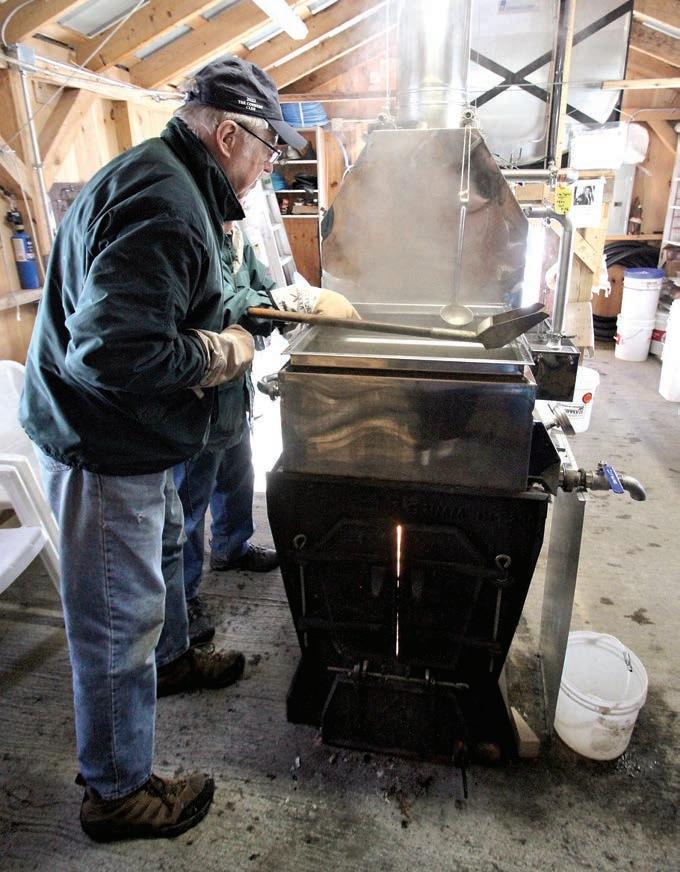Plant cops
UVM scientists solve crimes using plants


UVM scientists solve crimes using plants

Pick could come this week
LIBERTY DARR STAFF WRITER

Following a nearly four-month-long search and over 30 applications, the Shelburne Selectboard expects to pick a new town manager as early as this week.

John Blackmer dipped, checked and measured in the Wake Robin sugarhouse March 6, as he and his fellow volunteers enjoy a record year for production so far, given the warm-to-cold temperature shifts. The crew expects to boil through April. Blackmer is no stranger to the art and science of syrup making, producing the sweet stuff for decades in southern Vermont before moving to Shelburne. Volunteers each year take shifts, collecting sap and stoking the fire. As visitors stop by for a taste test, their designated cups live on the sugarhouse windowsills, awaiting their return and another sip. More photos on page 16.

Thomas Dunkley

One Shelburne business owner and two South Burlington residents will be inducted into the Vermont Sports Hall of Fame along with 10 other inductees from around the state in April for their contributions to sports in the Green Mountain State.
Thomas Dunkley of South Burlington is the 2023 David Hakins Inductee for exceptional promotion and development of sports and athletics.
Labeled the “Father of Vermont Gymnastics” by the U.S. Gymnastics Association in 1991, Dunkley’s passion

and dedication for the sport gave it strong roots in Vermont nearly six decades ago when he started and coached the first varsity men’s gymnastics team at the University of Vermont in 1966.
“I think that he had a passion for getting
See HALL OF FAME on page 10
Mike Ashooh, chair of the selectboard and member of the town manager search committee, said that the town will not hold public forums before making the decision as they’ve promised confidentiality to the candidates, “People want bios, they want names and I explained we have told the candidates we’re not going to broadcast widely their information because they have communities they have to go back to. Our consultant said sometimes people drop out if they know it’s going to be a public thing. So, we just didn’t want that to happen.”
In December, nearly six months after Lee Krohn announced he wouldn’t be continuing in the position beyond the end of his contract in November 2023, the selectboard created a town manager screening committee composed of five members — two selectboard members, two members from town committees and one resident — and began advertising for the position officially on Dec. 15.
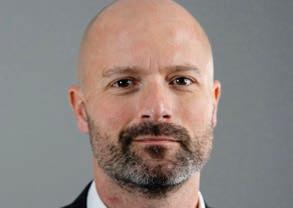
The committee extended the deadline from Jan. 15 through the end of that month as application numbers were lower than
See TOWN MANAGER on page 12
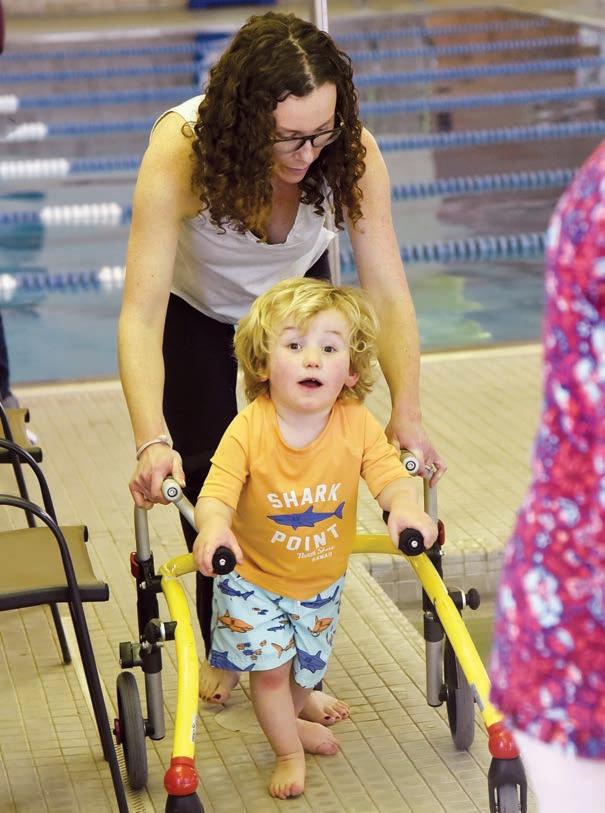
Across millennia, across cultures, it’s commonly agreed that water has certain healing properties.
Elaine Fortin knows this better than most.
As an adaptive aquatics instructor, she works with people of all ages living with a variety of disabilities, helping them to swim safely and experience the ways in which water can both support and free the body.
As one of Vermont’s most highly certified adaptive aquatics professionals, Fortin is on a mission to get everyone in the water, regardless of physical limitations. To that end, she’s looking to expand the field of qualified instructors so there’s enough for everyone, across Vermont.
On a recent Friday afternoon, Fortin was at the Swimming Hole in Stowe at work with Colson, a nearly 3-year-old boy with a syndrome that causes low muscle tone among a suite of other issues.
On land, he needs a walker to walk. But in the water his limbs move freely, smiling as Fortin coaxes him around the small pool with a sloped entryway set apart
from the pool’s swimming lanes.
More than just helping him on a physical level, however, Irene Chamberlain, Colson’s mother, said she also makes him feel comfortable on an emotional level.
“He’s able to choose to go into the water,” she said. “If you just place him in a situation, he does not love it. Colson doesn’t warm up to people very well, but it was no concern with Elaine.”

Charlotte Brynn, the Swimming Hole’s executive director, is also an adaptive aquatics instructor who specializes in working with adults who are dealing with post-traumatic stress syndrome or who have suffered a stroke.
“The water releases endorphins and dopamine, which feels good, positive, so there’s the reduced stress and anxiety, and then you’ve got the whole easy on the joints and I think having the range of motion and the relaxation in there is incredible,” Brynn said.
Fortin’s aquatic expertise extends from children through older adults, and she can work with people living with a wide range of disabilities, many of whom drive from hours away to attend sessions with her. She described helping a blind woman navigate the pool while Brynn said they’ve worked
with someone suffering from ongoing fatigue and other symptoms that lingered after they contracted COVID-19.
“We’ve got a gentleman that was here just last week, who has very bad cerebral palsy, so his legs and arms are very emaciated,” Fortin said. “The water is the only place where he can move and just do things. He just floats and goes around. But with gravity out of the water, he’s locked. He hasn’t got the strength.”
For those who think the adaptive aquatic instruction might be right for them but uncertain their budget can accommodate it, Green Mountain Adaptive Sports offers subsidies for anyone who qualifies.
Though the organization is more widely recognized for its work helping people with disabilities access Vermont’s ubiquitous winter sports, helping them get in the water and benefit from instruction like Fortin’s is another one of its commitments.
“Elaine, in particular, has really gone a step above and beyond and has invested her time. We’ve supported her in that effort to attend at least a couple of very substantial training clinics,” said Cynthia Needham, president of the Green Mountain Adaptive Sports’s
board of directors.
To encourage broader certification among swimming instructors, they’re partnering with the Greater
A new bill would move the legal age for all marriages in Vermont to 18 years old, the age
of consent, mirroring moves in other state legislatures this year to ban child marriage. Under existing law, minors 16 years of age and older can legally marry in Vermont with the written consent
of one parent.
“Children need to grow up safe and strong, educated and ready for the future,” Rep. Carol Ode, D-Burlington, the sponsor of the bill, told the House Judicia-
ry Committee on Feb. 16. “They deserve to be free from marriage before they grow up.”
If the bill, H.148, is passed, Vermont would be only the seventh state to ban child marriage, join-
With Pamela Heinrich MacPherson
Pamela, a hospice volunteer for over 35 years, has been an advocate for those facing the end of life. Her poems, and the stories that surround them, are from her experience at the bedside of the dying and come to life in the collection of poetry she has entitled “Vigil: The Poetry of Presence.” Her poetry will inform, guide and inspire you.
Friday, March 24 | 3:30 - 4:30 pm
Limited availability! RSVP: Sarah Dickinson, sdickinson@residenceshelburnebay.com | 802-348-2541
ing neighboring New York and Massachusetts in doing so.
“What we don’t want is for Vermont to become a destination state for child marriage,” said Marcie Hambrick, director of research and programs for child sexual abuse at the nonprofit Prevent Child Abuse Vermont. “I don’t think that’s what our state is about.”
The U.S. State Department labels forced marriages, especially involving minors, as a human rights abuse. Yet, child marriage remains legal in 43 states, some of which have no minimum age to marry at all.
This isn’t the first time the Legislature has considered measures to raise the legal age of marriage. Last year, Ode sponsored H.631, a bill that would have raised the marriage age to 18, but the measure timed out in committee.
Just under 300 children were married in Vermont between 2000 and 2021, 80 percent of whom were girls, according to data from





Plant materials have been used to solve crimes on television shows, in books and in real life. The use of plant materials in solving crimes is called forensic botany. Plant materials that have been utilized in solving crimes have included flowers, fruits, leaves, pollen, seeds and wood.
In his book, “Fruits of the Poisonous Tree: A Joe Gunther Mystery,” Vermont author Archer Mayor’s character detective J.P. Tyler, holds up a small baggie with a tiny fragment of organic matter in it, stating “it’s Russian olive … not a rare plant … the point is, there ain’t a single Russian olive on Gail’s property.”
Gail was the victim. Tyler also says he’s found “a Russian olive right in front of” a suspect’s trailer.
While that’s an example of plant forensics in fiction, one of the first and most famous cases solved using forensic botany was the 1932 kidnapping and murder of the Lindbergh baby. A homemade ladder used in the kidnapping was left behind at the scene.
The rings of a piece of wood in the ladder matched perfectly with the rings of a floorboard in the attic of Bruno Richard Hauptmann, according to Dr. Arthur Koehler, chief wood technologist at the Forest Products Laboratory in Madison, Wisconsin. The match was an exact match of the annual
rings as well as their unique pattern.
The defense team tried to disallow the forensic botany evidence, but the judge decreed that Koehler was an expert and allowed his testimony. Hauptmann was convicted with the testimony presented by the wood technologist key to his conviction.
The first-time plant DNA was used to get a conviction was in a 1992 murder of a woman in Arizona. In this case, an investigator noticed that a Palo Verde tree near the victim’s body had recently been scraped, possibly by a vehicle. DNA in the seeds from the tree matched the DNA of seeds found in seed pods in the suspect’s truck.
In both these cases, the plant material created botanical “fingerprints” that led to convictions.
Pollen also can act as a botanical fingerprint. For example, pollen might help identify a region where an event occurred or where a suspect has been. In some cases, DNA analysis actually can link a leaf to a single tree.
While the pollen of some plants is unique, this is not true for all plants. For example, grass pollen generally cannot be linked to specific plants or areas, but seeds and fragments of grass may have unique DNA. While not technically a plant, algae also has aided in solving crimes.
Additionally, plant materials may provide clues as to the timing of an incident. In the 2011 trial
Serving
Advertising Wendy Ewing wendy@shelburnenews.com (802) 985-3091 x12
Advertising Director Judy Kearns judy@otherpapersbvt.com (802) 864-6670 x21
Managing Editor Dylan Kelley dylan@stowereporter.com
News Editor Tommy Gardner
Staff Writers
Aaron Calvin Corey McDonald
Liberty Darr
Production Manager
Stephanie Manning stephanie@shelburnenews.com
of Casey Anthony, plant materials were used by the defense to refute the prosecution’s timeline. In this case, a forensic botanist determined the duration of time that her daughter Caylee’s body
was in the woods, all based on the growth of the plants in and around her remains.
Forensic botanist Dr. Christopher Hardy, a professor at Millersburg University, has been cited as
stating that forensic botany is an ideal investigative tool because it is always unbiased. So, the science of botany may be more important than one might think when it comes to solving crimes.

Editor/Publisher Gregory Popa gpopa@stowereporter.com
Billing inquiries Leslie Lafountain leslie@stowereporter.com (802) 253-2101
Advertising submission deadline: Friday at 5 p.m. advertising@shelburnenews.com classifieds@shelburnenews.com
Editorial submission deadline: Friday at 5 p.m. news@shelburnenews.com
Calendar submission deadline: Friday at 12 p.m. news@shelburnenews.com
Contact: 1340 Williston Road South Burlington, VT 05403 (802) 985-3091
Total reported incidents: 126
Traffic stops: 22
Warnings: 17
Tickets: 12
Arrests: 2
Medical emergencies: 48
Suspicious incidents: 13
Agency assists: 10
Citizen assists: 16
Welfare check: 4
Automobile incidents: 3
Car crash: 8
Animal problem: 8
Fire: 1
Theft: 5
Fraud: 2
Harassment: 2
Vandalism: 2
Alarms: 7
Pending investigations: 11
Feb. 27 at 9:25 a.m., a bobcat was hanging around the Wake Robin buildings, a caller told police. Officers checked the area but were unable to find the animal.
Feb. 27 at 5:26 p.m., a retail theft was reported at Tractor Supply. The officer checked the area but was unable to locate the individual.
Feb. 28 at 10:24 a.m., a two-car crash was reported with no injuries near the Shelburne Shopping Park.
Feb. 28 at 4:58 p.m., another theft was reported at Tractor Supply.
Feb. 38 at 6:33 p.m., a third theft
was reported at Tractor Supply.
March 1 at 5:48 p.m., a retail theft, the fourth in three days, was reported at Tractor Supply and police could not locate the individual. The incidents are under investigation.
March 1 at 7:26 p.m., a two-car crash was reported with no injuries on Shelburne and Webster roads.
March 2 at 10:37 a.m., a caller reported receiving harassing messages. The incident is under investigation.
March 2 at 3:18 p.m., a two-car crash that had occurred earlier in the day on Pine Haven Shores Road was reported to police.
March 2 at 5:05 p.m., a Kelady Drive resident’s fence was vandalized, they told police. The case is pending further investigation.
March 3 at 1:04 p.m., a fraud complaint was reported to police. The incident is under investigation.
March 3 at 2:16 p.m., a two-car crash on White Cedar Lane that happened earlier in the day was reported to police.
March 3 at 10:29 p.m., police spoke with guests at the Quality Inn about keeping the noise down.
March 4 at 11:32 a.m., a caller told police he was struck by a
vehicle in the Kinney Drugs parking lot, but when police arrived, they couldn’t find the caller.
March 4 at 3:57 p.m., a caller reported receiving “annoying” phone calls, police said.
March 5 at 12:55 p.m., a Pond Access Road resident’s vehicle was vandalized, police said.
March 6 at 8:59 a.m., a two-car crash was reported with no injuries on Shelburne and Lower Webster roads.
March 6 at 9:20 a.m., Shelburne police assisted the Department of Children and Families with locating a missing juvenile.
March 6 at 3:18 p.m., a two-car crash was reported with no injuries on Shelburne Road.
March 6 at 3:54 p.m., multiple fire crews were dispatched to the Wright House after a report of smoke in the building. A fire was extinguished, and no injuries were reported.
March 8 at 3:19 a.m., a person was injured after getting into a one-car collision near Summerfield Road, but they refused transport to the hospital.
March 10 at 5:10 p.m., police responded to a fraud complaint, and the incident remains under investigation.


had previously.
During the early months of COVID19, governors in New England states issued executive orders allowing municipalities to meet online so long as the public could attend remotely. The democratic benefits of this arrangement quickly became evident. According to a public official quoted in a 2020 study, the changes “made it a lot easier for residents who have other things to do, to be heard. People with family obligations, elder care, or child-care issues.”

The executive orders that prompted these changes, however, have long since expired. New England states have resorted to a patchwork of livestreams, short-term remote meeting requirements and, in some cases, reverted to pre-COVID-19 policies and in-person meetings only.

There’s a better way forward.
Permanent changes need to be made to state laws to require both in-person and remote access to government meetings. People with young children, health issues, disabilities, work commitments or other circumstances that prevent in-person attendance at these meetings are at risk of again being shut out of the democratic process. At the same time, there are benefits to in-person meetings that must continue along with this expanded access.
Now is an ideal time to contact your state representatives and make this need known. Sunshine Week is March 12-18 and is a celebration of open government and freedom of information. The sunshine reference is attributed to U.S. Supreme Court Justice Louis D. Brandeis who famously wrote that “sunlight is said to be the best of disinfectants.”
In other words, an informed citizenry is the best check against government corruption. We should use the occasion to demand the permanent changes necessary for all members of the public to effectively engage with the government and stay informed.
The 2020 study — published in the Journal of Civic Information and authored by Jodie Gil and Jonathan L. Wharton — involved nearly 100 municipalities in Connecticut following the state’s COVID19 emergency orders. It found that most of these municipalities experienced the same or increased participation during their public budget deliberations as they
While these towns also experienced learning curves and other unexpected challenges, the authors’ findings reinforce what many of us have come to believe during the last three years: the public is more likely to participate in meetings when given multiple ways to do so.
Massachusetts lawmakers recently recognized this reality with legislation that could serve as a model for other states. The bill would apply to all executive branch agencies and municipal bodies subject to the state’s open meeting law. It phases in over seven years a requirement that they meet in person and also provide remote access and participation but demands swift compliance by state agencies and elected municipal bodies. Non-elected municipal bodies with logistical or budgetary concerns can apply for hardship waivers. The legislation even creates a trust fund that will financially support those needing assistance. The waivers, however, are available only until 2030. There must be universal compliance by that time.
While each state has its own local considerations, there’s no reason why other open meeting laws cannot ultimately require hybrid access. Don’t know what legislation is introduced in your state? Use the legislation trackers at nefac.org/ foiguide.
Remote meeting technology is becoming more prevalent, less expensive and greatly needed by citizens unable to attend in person. At the very least, open meeting laws should be changed to incorporate:
• Hybrid access: The public needs in-person access to government meetings along with the ability to attend and participate remotely. Both forms of access are critical. While remote meetings will make government accessible to those who cannot otherwise attend, citizens still need face-to-face time with their representatives without their commentary being muted or disconnected from a Zoom line.
• Hard deadline: The goal is to have all public bodies meeting in a hybrid form. The ease of reaching this goal will vary from one government agency to the next. States should set a clear and hard deadline for all government bodies to comply, taking into consideration challenges such as staffing, funding and logistics.
• Funding: A common argument against hybrid meetings is the cost of the
I hope everyone enjoyed another Town Meeting Day reconnecting with neighbors. This week marks the mid-point of the legislative session that we call crossover when the House must get its priority bills over to the Senate and vice versa so both chambers can fully consider the details. Here are some highlights of what is moving from one body to the other:
• Housing
As chair of Senate Committee on Economic Development, Housing and General Affairs, I am proud of its work on S.100, the Housing Opportunities Made for Everyone (HOME) bill. It was voted out of committee unanimously and is currently in the Senate natural resources committee, expected to advance with consideration for the balance between housing and conservation. Both appropriations committees will also weigh in, as we continue to make historic investments in housing and municipal infrastructure with recovery funds and new federal dollars.
The HOME bill promotes multi-family housing and streamlines overlapping permitting processes to bring down costs and make more workforce homes

available. With 24,000 open jobs and fewer than 1,000 housing listings, we will not meet climate, health care, child care or other policy goals without creating more opportunities for Vermonters to live in safe, warm affordable homes close to where they work.
• Retirement security
The committee is working with the state’s treasurer to advance a new program called VT Saves. Following the lead of 12 other states, we would create an opt-out voluntary retirement savings program for all Vermonters who do not currently have a retirement savings plan, currently about half of working people in Vermont.
• Child care
Another piece of workforce equation is child care. We commissioned a study of the costs to provide early educators with competitive wages and benefits, and we are looking at a roughly $200 million price tag to support their economic well-being while ensuring most parents pay no more than 10 percent of their income toward child care. A coalition of business leaders are advocating for 1 percent on the payroll tax to meet this critical need.
• Gun safety
We are looking at several common-sense gun safety provi-
sions and hoping to find common ground with the governor. One particularly important to me is closing the loophole that allows someone with an abuse or extreme risk protection order against them to place their guns in the hands of a family member instead of having them stored in a state-sanctioned facility for the duration of the order. Some of the devastating mass shootings in this country
involve this kind of retrieval of guns from a non-secure location.
I hope this helps you stay informed on some of the major work we have ahead of us this session. I look forward to your feedback, even if I’m a little slower to reply. We are likely to adjourn in mid-May, and my due date is May 10, so keep me in your thoughts as the session progresses and I try to finish the
people’s work before my baby — and Shelburne’s newest resident — arrives.
Kesha Ram Hinsdale, a Democrat from Shelburne, represents the towns of South Burlington, Shelburne, Charlotte, Hinesburg, Milton, Burlington, St. George, Westford, Underhill, Jericho, Richmond, Winooski, Williston, Essex and Bolton in the Legislature.

Focus on the facts and science and dial back the emotions is a point often made by the Vermont Fish & Wildlife Department commissioner and staff when discussing wildlife management issues. Here are some facts from information received through public records requests from the department about trapping:
• Only a fraction of a percent of Vermonters holds trapping licenses.
In 2022 there were a total of 1,836 trapping licenses — 0.28 percent of the population of Vermont. There were 888 new trapping licenses sold — 876 to Vermonters and 12 non-resident licenses and 948 permanent licenses with trapping privileges.
• Of those who hold licenses,
an even smaller fraction are active trappers.
It is mandatory for all trappers with a license to submit an annual activity trapping report to the department, even if they did not trap. For the 2021–2022 trapping season, the most recent year with data, 1,431 annual reports were submitted. Only 242 people reported in-season trapping for the 2021–22 season, that is, only 0.04 percent of the Vermont population was actively trapping for recreation or fur.
• Trapping licenses contribute a fraction of a percent to the overall Fish & Wildlife Department budget.
Revenues from 2022 licenses totaled $32,530 — there is a range of fees from $10 for a youth trapping license to $305 for nonresidents.
A report on the department’s website lists their actual 2022 budget as $26 million. This makes the revenue from trapping licenses 0.12 percent of the total budget.
In each of these instances — the total number of licenses held, the number of active recreational trappers and revenues from trapping licenses – we are talking about a fraction of 1 percent. A ban on recreational and fur trapping will affect an incredibly small number of Vermonters and have minimal impact on the Fish & Wildlife Department’s budget.
Add to this, that for fur-bearing animals, trapping serves no wildlife management purpose. The state is not overrun with bobcats, otters, mink or other furbearers. Problems from beavers can be managed in non-lethal ways. Killing coyotes does not decrease their numbers as their litter sizes adjust to reflect changes in population and food availability.
All this begs the question — whose interests are being served by Vermont’s recreational and fur trapping policies? It most assuredly is not most Vermonters who, in the department’s own survey, said that they do not approve of trapping for recreation, 68 percent; or fur, 62 percent. This is an extreme case of the tyranny of the minority — a fraction of the population,
0.04 percent, wielding inordinate power and obstructing any efforts at change.
The enabling of this tyranny of the minority starts at the top with Gov. Phil Scott who appointed Fish & Wildlife Department commissioner Christopher Herrick, who in turn sets the tone for department staff. The department is pursuing a whitewashing strategy of promoting so-called best management practices to legitimize trapping. Saying there are best methods to trap wildlife in painful ways is akin to saying there are best ways to hold dogfights, or best ways to administer corporal punishment to children in schools. We don’t do either of these because society has come to realize that dogfighting and corporal punishment are inhumane.
Similarly, somewhere along the line, the department stopped issuing licenses for killing wildlife and started issuing licenses for “harvesting” them — an attempt to sugar coat reality. However, a bobcat is not an ear of corn. More pointedly, according to Mary Jane Johnson of the Kluane First Nation, “when a bear gets one of us it doesn’t harvest us. It kills us, and we kill them too.”
There was a time, back in the 1600s, when trapping played a vital role in survival, but in the 21st century it is no longer necessary to trap for survival to keep oneself warm. I bought a perfectly good winter jacket at a secondhand store for $10.
It’s time we remembered there is also a “tradition” of democracy, in which the will of the majority governs when it does not cause undue harm. There is no compelling case for harm being caused by enacting a ban on fur trapping and recreational trapping. There is most certainly a case for harm to wildlife if a ban is not enacted.
There currently is a bill in the house, H.191, that will ban recreational trapping and fur trapping. Contact your legislators. Your opinion counts.
If you walk into my kitchen, it all seems quite normal. Counters and cupboards, sink and stove, we all get along just fine. Not true for our side-byside refrigerator and freezer, the cause of consternation in the otherwise warm vibe of our home. Specifically, I blame the freezer. It’s provoked cold shoulders, frosty conversations and icy stares all due to our fundamental, irreconcilable difference of opinion of how to use this appliance.
It’s a cold war, baby.
Did you know the freezer is a magic box that makes food last forever? Please say no to that question. If you do, I’ll hire you as a marriage referee and you can tell my husband the cold hard truth: the freezer is not some marvel of posterity that makes the beef chili frozen in 2002 still good in 2023. Even government food safety guidelines recommend that chili comes out of the freezer in two to three months, tops.
And don’t get me started on that cucumber that’s in there.
I hate to give my spouse a hard time. It’s not his fault he can’t throw food away. Actually, isn’t that a great quality to have? No! I tell you, it is not. People, why else have a compost bucket? If dinner is lousy, for the love of Ina Garten, let me toss it! Instead, at my house, it’s wrapped, labeled and put in the freezer for time immemorial.
This is an unacceptable problem. Why?
To the Editor:
My daughter opened the paper in anticipation today that she’d see an article about the Champlain Valley Union girls’ basketball team’s championship game from March 3.
When she saw no mention and just a picture and headline of the boys run to the finals, she closed it and said, “typical. Everyone only really cares about the boys’ teams.”
This has always been noticed in our

continued from page 5
required equipment and technology. While these costs have decreased significantly, they can still impose a burden on small towns with limited funding and staffing. States should earmark funding specifically for the purpose of hybrid meetings and help those municipalities that genuinely need the assistance. Consider it an investment in democracy.
There have been few silver linings to emerge from COVID-19. Remote access to government meetings is one of them. It provides equity and engagement in our
Ice cream. On what planet does it make sense to store food from the Bush presidency — and I’m talking George Sr. here — instead of using that coveted frozen real estate for Ben and Jerry’s Coffee Toffee Bar Crunch?
I’d like to tell you my husband is being thoughtful, but that’s not the case. He genuinely believes all food is edible. The thought of which stops me in my tracks. Doesn’t he notice the difference between my seared salmon with lemon-caper-orzo and that hunk of god-knowswhat he just scraped ice off? I’m throwing away my cookbooks. I once made a gorgeous butternut squash soup that appeared yummy, but was inedible due to my overzealous use of jalapeños and cayenne pepper. Instead of giving the soup a zesty bite, I gave it a bark. It was a real dog of a dish, one that should have gone down the drain. But no such luck. It was frozen in minuscule portions which my husband, risking obliteration of his taste buds, ate a thimbleful at a time.
Exacerbating the freezer space problem is his proclivity to roam the aisles of Costco. Whenever he gets in the car to head to that warehouse selling a ton of things we don’t need, I sprint to the driveway and scream, “Remember, there’s no room in the freezer!”

Pretty sure my neighbors love this. Somehow what my husband hears is, “Don’t come home unless you have a car full of frozen food.”
Thus, deep in the recesses of our freezer, you’ll find gems like fossilized patties of some sort of bean protein, a weird
cauliflower rice thing and lots of frozen fish. Frankly, I feel bad for them. By the time this catch gets to my freezer, they’ve probably been frozen for months. At our house, they won’t see the light of day until the next Haley’s Comet.
Listen, I don’t blame my husband for his freezer hoarding ways. He came by it honestly — or should I say, maternally? His mother has a loaded freezer filled with unidentified, aluminum foil wrapped rocks.
OK, it’s probably food, but who would know? Chisel out and thaw one of those crinkly silver chunks that looks like it’s
been encapsulated since the 1950s and voila, your mystery dinner is served. Oh, it’s tuna pea wiggle. And it is from the 50s.
Oh well, at least we have food. That is more than a little fortunate. Even if it is crusted in permafrost and has to sit on my kitchen counter for eight hours to reveal itself. I am lucky — that I don’t have salmonella. Meanwhile, there is no doubt I’ll keep my hot husband and shop for a bigger freezer.
house that the gym is filled with fans for the boys’ games, but some girls’ games will barely have the student section filled. Seeing the lack of mention in the paper was disheartening and hopefully an oversight. I would hope that the next edition would highlight the girls’ win and, hopefully after tonight, the boys’ win, as well! (Editor’s note: Both title wins will be covered in our March 23 edition.)
Marie Ayer Hinesburg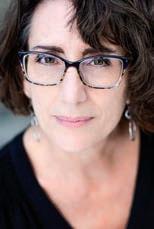
democracy that many members of our communities would not otherwise enjoy. We need to change our open meeting laws now to make sure this access is available long after the pandemic has run its course.
Justin Silverman is the executive director of the New England First Amendment Coalition. The non-profit non-partisan organization is the region’s leading advocate for First Amendment freedoms and the public’s right to know about government. Learn more at nefac.org.
Williston Federated Church, 44 North Williston Road, is holding a rummage on Friday, March 31, 9 a.m. to 6 p.m., and on Saturday, April 1, 9 a.m. to noon. Shop for gently worn clothing for all ages. On Saturday fill a 30-gallon trash bag for $5. Proceeds from the clothing sale are used in support of mission outreach. For more information contact Carol Bouchard at 802- 862-7400. More information at steeple.org.
On Sunday, March 19 at 2 p.m. at the Ethan Allen Homestead, Dr. Elise Guyette introduces the lives and work of Black trailblazers in early Burlington history whose stories have been absent from the historical narratives as the town changed from village to the Queen City.
Attend in person at the Homestead Museum, register remotely at bit.ly/4204db8, or by email at ethanallenhomestead@gmail.com or phone at 802-865-4556.
The deadline to apply for the second annual Vermont Student Wildlife Art Contest is Friday, March 17.
The prize for first place is $1,000. Nine other cash awards will go directly to winning artists in grades seven through 12 who submit two-dimensional art in any medium and depicting any species of Vermont wildlife.
An exhibition of the top 40 will be held in late April at the Highland Center for the Arts in Greensboro. Rules, information and online application form are at vtwildlifeeducationfund.org.
On Sunday, March 19, at 2 p.m., Vermont state archaeologist Jess Robinson, a native Burlingtonian and graduate of University of Vermont, with advanced degrees from the University of Kent and University of Albany, will speak in the Fletcher Free Library’s Pickering Room about the native people who lived in the region pre-European contact.
Robinson will share insights
about gained through exploration of archaeological sites and discovered artifacts. The event is free with elevator access to the upper floor.
Meet your legislators on Monday, March 27, 4 to 5:30 p.m., in the Shelburne Pierson Library community room.
Representatives Jessica Brumsted and Kate Lalley, along with senators Thomas Chittenden, Virginia Lyons and Kesha Ram Hinsdale, meet the fourth Monday of every month at the Pierson Library.
The Charlotte Shelburne Hinesburg Rotary will host an all-youcan-eat pie for breakfast event on Saturday, March 18, 8 a.m. to noon, at the Shelburne Town Hall.
A wide variety of sweet and savory pies are available from PoorHouse Pies in Underhill and homemade selections by Rotary members. Entertainment will be offered by Shady Rill and McFadden Irish Dance Academy. Recommendation is $10 for adults and $5 for children.
Give the lifesaving gift of blood at the Shelburne community blood drive on Tuesday, March 21 from noon to 5 p.m. at the St. Catherine of Siena parish hall in Shelburne. This blood drive is our way of giving neighbors an opportunity to help save lives.
To give, call 1-800-733-2767 or visit redcrossblood.org and enter Shelburne to schedule an appointment.
The Age Well meal pickup for Thursday, March 16, is from 10 to 11 a.m. at the Charlotte Senior Center features beef round, boiled potatoes, cabbage and carrots in beef stock, wheat roll with butter, leprechaun cake with frosting and milk.
You must pre-register by the prior Monday with Kerrie Pughe, 802-425-6345 or kpughe@charlotteseniorcentervt.org.
The meal on Thursday, March 23 features roast pork with sauce,
The Armand Poulin Memorial Green Up Day poster art contest is a fun project for many art classes in January when there is usually plenty of snow on the ground. It gives kids an opportunity to think about the spring ahead and how they can influence the litter problem as it begins to creep out of the snowbanks.
“Every year we see bright and sunny happy images — how Green Up Day makes us feel — and dark and dreary images, the what-if-Green-UpDay did not exist scenario,” Green Up executive director Kate Alberghini said. “Usually, we see around 200-250
mashed potatoes, peas and onion, wheat dinner roll with butter, oatmeal raisin cookie and milk.
The meal on Thursday, March 30 features turkey burger with vegetable gravy, mashed potatoes,
entries. This year we had 654. It is fantastic to see student engagement, in all age groups, on the rise. They are genuinely becoming more aware, more concerned and more involved in environmental stewardship.”
Longtime judges David Schutz and Hale Ritchie had their work cut out for them in reviewing the art in every medium, from crayons to watercolors. The overall contest winner, whose art will be featured on the Green Up Day posters, is Penelope, a fifth grader from Ludlow. The grade nine to 12 category winner is Amelie, a tenth grader from Dorset; the grade five to eight
Brussel sprouts, wheat roll with butter, peach Craisin crisp and milk.
The meal on Thursday, April 6 features sweet-and-sour pork with vegetable sauce, brown rice with
winner is Audrey, an eighth grader from Shelburne; and the winner for grades kindergarten to fourth is Gabriel, fourth grade of Underhill.
In addition to artwork, there is a writing contest. From essays to poems, kids relay their concerns and love for Green Up Day. The winner of the writing contest is Juliette, an eighth grader from Montpelier.

Cash prizes are awarded to each winner.
Green Up Day this year is Saturday, May 6.
To learn how to get involved with Green Up Vermont go to greenupvermont.org.
lentils and vegetables, green beans, wheat bread with butter, Easter cake with icing and milk.
The suggested donation is $5. Check the website for last-minute cancellations at bit.ly/3FfyLMb
Brendan Tivnan of Shelburne was named to the dean’s list at Tufts University for the fall 2022 semester.
Emma Ramirez-Richer of Shelburne graduated summa cum laude from Middlebury College in May 2022.
Mackenzie Marcus and Jack Scotnicki IV, both of Shelburne, were named to the dean’s list for the fall semester at St. Lawrence University. Marcus is majoring in psychology and attended Champlain Valley Union High School. Scotnicki is majoring in economics and business in the liberal arts. He attended Vermont Academy.
Ian Rider of Shelburne was named to the dean’s list at Rochester Institute of Technology for the fall semester. Rider is in the computer engineering technology program.





Shelburne resident Anais Carpentier has been named to Western New England University’s dean’s list for the fall semester. Carpentier is pursuing a degree in psychology.
The following Shelburne students at the Community College of Vermont were named to the fall student honors list: Dominic Begue and Joshua Bogue


Shelburne resident Charles Averill made the dean’s list at Syracuse University for the fall semester.
Olivia Miller from Shelburne participated in Emerson College’s stage production of “Paris,” which features Emmie, one of the only Black people living in Paris, Vt. The play touches on isolation and invisibility. Miller is majoring in design and technology.
Edward Tyler of Shelburne has been named to the dean’s list for the fall semester at Worcester Polytechnic Institute.
Aiden Achilles of Shelburne has been named to the fall dean’s list at the University of Rhode Island.
Riley Canty and Jackson Townsend, both of Shelburne, were named to the fall dean’s list at the University of New England.
Numair Nasir and Megan Rogers, both of Shelburne, made Southern New Hampshire University’s fall president’s list.

John Bingel of Shelburne has been named a presidential scholar at Clarkson University. The freshman is majoring in mechanical engineering.
Shane B. Boehmcke of Shelburne, a senior majoring in global supply chain management, was named to the dean’s list for the fall semester at Clarkson University.
The following students from Shelburne earned bachelor’s degrees from the University of Vermont in May: Emma Hoechner, cum laude in global studies;

Isabelle Schmitt, magna cum laude, mathematics; Sienna Devoe-Talluto, anthropology; Tilak Dahal, biology; Jack Bolduc, microbiology; Sawyer Bottoms, biological science; Anna Brooks, molecular genetics; Thomas Carey, anthropology; Sarah Clauss, cum laude, environmental sciences; Garrett Dunn, environmental sciences; Lucas Magnier, environmental studies; Lydia Maitland, cum laude, neuroscience; Christopher Krag, biological science; Amara Krag, psychological science; Erin O’Donnell, neuroscience; Karla VanKleeck, animal sciences; Caroline Averill, neuroscience; Fiona Love, business administration; Samuel Noel, business administration; Patrick Keelan, business administration; Henry Caswell IV, business administration; Isaac Giles, business administration; Gregory Levine, computer science; Harold Flad, elementary education; Denver Wiederin; secondary education; Tomas Georgsson, mathematics; and Scott Stanley, mechanical engineering.
The following Shelburne students graduated from University of Vermont in May: Erick MacLean, Doctor of Medicine; Emily Rocheleau, Doctor of Nursing; Emily Wasserman, Doctor of Nursing; Carolyn Snell, Doctor of Physical Therapy; Richard McClintock, Master of Science in Statistics; and Martha Laud, Master of Science in Medical Science.
The following students from Shelburne graduated from Community College of Vermont in June: Aprile Michelle Dyer, Numair Nasir and Anna Frances Svetlana Rowland

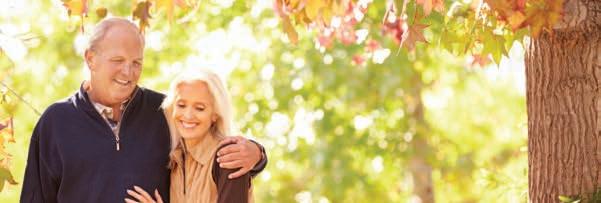
Thomas Alexandrides Daley of Shelburne received a bachelor’s degree in earth and oceanographic

science and mathematics, magna cum laude, Phi Beta Kappa, from Bowdoin College.
Spring 2022 graduates at Vermont Tech from Shelburne included: Ian Ford, Associate of Science in radiologic science; Adam Kuhns, bachelor’s degree, computer software engineering; and Claire Stodola, bachelor’s degree in nursing.
Dennis Ross of Shelburne has graduated from Hartwick College.
Nina Lissarrague graduated from Hamilton College in May. An anthropology major, Lissarrague graduated with departmental honors and completed a thesis titled “Ambivalence in Early Adulthood: How Middle-Class American College Students Navigate Money and Identity in their Aspirations for Independence in a Debt Economy.”
Philo Brown-Gould of Shelburne graduated from Champlain College after the spring 2022 semester.
Hannah Webster of Shelburne graduated cum laude from Bates College. She majored in psychology and minored in history. The daughter of Daniel and Katrina Webster, she is a 2018 graduate of Lake Champlain Waldorf High School.

Ryan Michael of Shelburne has earned an Award of Excellence at Western Governors University College of Information Technology. The award is given to students who perform at a superior level in their coursework.
Connor Rushford, who attends Colgate University, earned the spring 2022 Dean’s Award with Distinction. Rushford is a Middle East & Islamic studies and international relations major from Shelburne and a graduate of Berkshire School.








Performed

HALL OF
FAME continued from page 1
kids to be involved in moving,” said his oldest daughter Ruth Dunkley McGowan. “So, he went on to teach in first the YMCA and then in public schools, and then said that Vermont looks like a great place to bring gymnastics to because he and a few people had been working in gymnastics in New Jersey, so he went up to the University of Vermont and started the first men’s gymnastics team.
“Vermont really didn’t know a lot about gymnastics at that point,” she added.
Just one year later, Dunkley established gymnastics as a sport at the Vermont high school level with the first sanctioned state championships in 1967. He also organized and coached the gymnastics teams for the Burlington International Games during this era while serving on the board of directors.
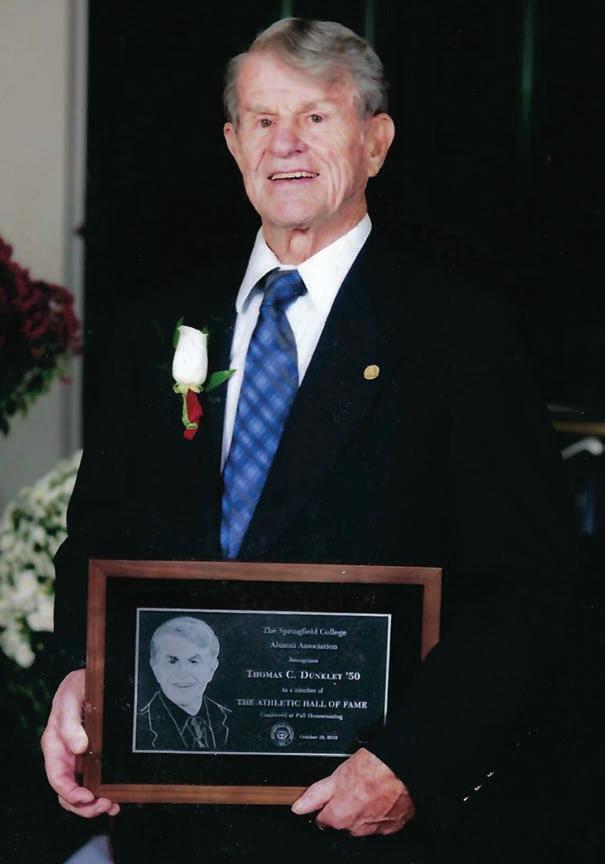
McGowan explained that for most of his life, Dunkley had a passion for conservation, the environment and, of course, gymnastics. So, in 1973 he incorporated all of these into the creation of Dunkley’s Gymnastics Camp, the longest-running of its kind in the state.

“He decided he would run his own camp. So, he found this place up on Keeler’s Bay in South Hero. It was an old fishing camp where there was a great big rec hall, which we converted into a gym,” McGowan said. “My dad bought it in 1972 and in 1973, that spring, we opened up Dunkley’s Gymnastics Camp.”
McGowan said that her dad’s love of movement and gymnastics was a tribute that was passed down to most of his children and he even included them in some of his most memorable performances.
“In 1957 his agent called him up and said, ‘Can you make an engagement later on in Washington at the White House to perform for the president?’ So, we went down and we did the show.”
Later, he received a command performance for the King of Arabia in Riyad, Saudi Arabia where he performed with his daughters and wife.
Dunkley died on Aug. 1, 2012, but his family continues to run his summer camp, which remains active to this day.
“I would say other than his passion for getting kids moving and for the environment, his love of his family was right up there,” said McGowan. “He put his family first in all that he did and really had a love for his family.”
John KoernerShelburne resident and local business owner John Koerner is a high-scoring soccer player who was the all-time leading scorer
at Champlain Valley Union High School and the University of Vermont. During his high school career, he also excelled in ice hockey, tennis and track before graduating in 1974. He led the high school to two trips to the state soccer title game, winning the 1971 Division I championship.
Koerner said his love for sports was something that was passed down through his family.
“My love of sports came from watching my older brothers play along with the support of my parents and the fact that I didn’t like going to school,” he said.
Koerner also reigned as the high school boys’ state tennis champion and was the Northern New England champion. In 1972, Koerner was ranked third in New England in age 16 and under singles tennis. He also won several Vermont State Junior Boys championships in various singles and doubles age divisions during that era.
At the University of Vermont, where he was inducted into the hall of fame in 1988, Koerner played center forward in men’s soccer for four seasons and wore jersey number 12. As a powerful offensive force, he scored 45 goals — still the most by any University of Vermont player — while his 26 assists and 116 points are also career records.
He was New England’s leading scorer in 1975 with 15 goals and eight assists for a conference-record 38 points. All were University of Vermont single-season records. The University of Vermont was 38-13-4 during Koerner’s career, winning a league title in 1975 when they went 11-2-0 and made their first trip to the NCAAs.
“Our team’s biggest wins were against the University of Connecticut and the University of Rhode Island as they were always ranked in the top ten nationally so beating that team always got the program lots of recognition and allowed us to play in the NCAA tournament,” he said.
After college, his passion for sports never died. “I continued to play golf and qualified for two Vermont amateur tournaments,” he said. “And I played for 30 years in a men’s hockey group.”
In 2004, Koerner founded 52 Kids, a nonprofit foundation that advances sustainable progress and enterprise for children in the Kamuli district of Uganda.
Just eight years later, he began a new endeavor by opening Folino’s Pizza in Shelburne — a venture that he says sports taught him a lot about. “Sports taught me in business that you need good leaders at the top and to work as a team,” he said.
Andy Gardiner of South Burlington is the 2023 Mal Boright Media Inductee for serving over 25 years as a leading sportswriter in the state and beyond.
The Tennessee native and Florida State graduate came to Vermont in the 1970s to earn his master’s degree at the University of Vermont while beginning his sports writing career at the Burlington Free Press in 1975.
Gardiner, who was unavailable for comment at press time, was named the Vermont Sportswriter of the Year in 1977 and 1981 by the state’s chapter of the National Sports Media Association. In 1982-83 he was recruited as an inaugural staff member of USA Today but later returned to Vermont with the Burlington Free Press where he was named the state’s sportswriter of the year again in 1987 and 1988.
“He had a remarkable career at the Free Press,” said Jim Welch, Gardiner’s colleague and close friend of 50 years. “I’d say one of the high points I’m sure for him was covering the University of Vermont’s men’s basketball. I think it was 2005 when they won a first-round NCAA game against Syracuse.”
During his time at USA Today, he covered national college sports, pro golf and 11 Olympic Games beginning with the Winter Games in Calgary in 1988.
“I would say the thing that we most did together was cover the Olympics,” Welch, former deputy managing editor in sports
at USA Today, said. “We covered nine Olympics; he actually did 11 himself.”
After retiring from Gannett and USA Today, in 2012 he returned to Vermont and remained involved in the state’s sports media as a
freelancer and a contributor to Vermont Public Radio.
Meet the team behind “Dear Rider, The Jake Burton Story” on Thursday, March 16 at 7 p.m., as part of the Vermont Ski and Snowboard Museum Red Bench Speaker Series.

Director Fernando Villena and co-producers Ben Bryan and Mike Cox will join moderator and former Burton rep Chris Copley for an in-depth look at the HBO film documenting the life of Jake Burton Carpenter, Burton Snowboards founder and owner, as he built the company and snowboarding into a global and cultural phenomenon.
Inspired by a surfboard-styled strip of wood, Burton Carpenter created his first snowboard in 1977 as an inexpensive alternative to skiing. From there, he developed increasingly versatile boards, lobbied ski resorts to allow snowboarding, sponsored world-class athletes and navigated the cultural backlash of what media outlets called the worst new sport. By the late 90s, Burton

Tuesdays, March 28 to May 2 from 9 to 10 a.m. at the Shelburne Town Gym
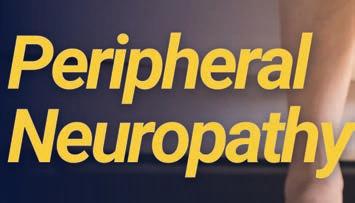



Find some calm in your body and your mind. Join instructor, C. Jane Taylor, for an accessible, fun, energizing yoga flow. Get the heart rate up a little before winding down and relaxing. All levels welcome. Bring a yoga mat and a cotton blanket or large beach towel. Registration deadline is March 22; fee is $80 per person.


Saturdays from May 13 to June 24, 8 to 10 a.m. at Davis Park courts.
These classes are appropriate for the person who plays on a










HALL OF FAME
continued from page 10
was always somebody who was a good friend of everybody there and certainly well respected by those whom he covered,” Welch said. “He could be a tough reporter, but he was always fair and always honest and polite about his job. He’s so deserving of this honor from the Sports Hall of Fame.”
Villena began his career editing documentaries, then transitioned to producing music videos with artists such as Incubus, Tupac and The Black Eyed Peas. His film credits include David Lachapelle’s “Rize” (2005), “Every Little Step” (2008) and “Crank: High Voltage” (2009). Villena made the leap into directing with “Any One of Us.” Next came “Giving Voice” on Netflix, and most recently Dear Rider.
Bryan, co-producer, leads and oversees the team at Red Bull Media, which produced the Burton film.
Carpenter’s vision catapulted snowboarding into the mainstream and onto the world stage of the Olympics.
Learn how each panelist contributed unique and intimate aspects to the film. A Q&A session will follow.


regular basis and has developed a substantial amount of skill — 3.75 and above level players — but is serious about further developing skills and open to instruction. Drilling, targeted instruction and video review of performance will all be used.
Games will be played toward the end of classes to help implement techniques learned. Participants must be comfortable having their play videotaped and reviewed by the instructor and other participants. These clinics are offered by instructor, Len Gulino, who is a trained pickleball instructor, former USA Pickleball ambassador and pickleball tournament director. Each class is limited to three players with a fee of $40 per class.
• Clinic A: Saturday, May 13,
Cox, the film’s co-producer, spent 25 years as Burton Snowboards sales rep in the Midwest. Moderating this discussion is Copley, a 20-year Burton veteran as the pro team manager and announcer for the U.S. Open at Stratton.
Virtual doors to the museum open and the discussion begins at 7 p.m. A $10 donation from each guest is encouraged.
registration deadline: May 5. The soft game: dinks, drops and third shot drops.


• Clinic B: Saturday, May 20, registration deadline: May 12. The hard game: volleys, speed ups and resets.
• Clinic C: Saturday, June 10, registration deadline: June 2. The spin game: top spin, slice and back spin.
• Clinic D: Saturday, June 24, registration deadline: June 16. The lob game: offensive, defensive and retort.
Registration is open for spring and summer camps and programs. Visit the Shelburne Recreation department website at https://bit. ly/42jNRui for registration information. Participants may also register at the recreation department office.
Other inductees include Olympic alpine skiers Suzi Chaffee of Rutland and Doug Lewis of Middlebury; three-time Olympic snowboard medalist Kelly Clark of West Dover; two-time Olympic mountain biker Lea Davison from Jericho; three-sport star and college football standout Jake Eaton of Rutland; legendary high
school basketball coach David Fredrickson of Bennington; record-setting basketball players Jasmyn Huntington Fletcher of Bradford and Morgan Valley of Colchester; four-sport standout and high scoring soccer player John Koerner of Shelburne; and Bob Molinatti from Colchester, the hall’s first para-athlete.

• creating advertisements for print and web
• newspaper page layout
• loading web & social media content
• design/layout software (Adobe Creative Suite, Quark)
• attention to detail is a MUST
• willingness to tackle tedious tasks when appropriate
• a team player with a positive attitude
Send a resume and cover letter to: Stowe Reporter, POB 489, Stowe VT 05672; katerina@stowereporter.com. No phone calls please.

There is no better time to join our team! Northfield Savings Bank, founded in 1867, is the largest banking institution headquartered in Vermont. We are committed to providing a welcoming work environment for all.
Our Human Resources team is GROWING,and we are looking for a professional to joinour exceptional HR team in our Berlin Operations Center.
The Benefits & Payroll Administrator will be responsible for processing bi-weekly payroll, handing employee benefits information updates, maintaining employee files and reports, and will act as the primary contact for internal questions and requests related to benefits and payroll.
The successful candidate will have excellent verbal and written communication skills, be highly organized, and have a high attention to detail. This position will support the HR team in many capacities, while supporting the organization and maintaining confidentiality. A high school diploma, general education degree (GED) or equivalent is required.
Prior Human Resources, Office Management, or Accounting experience is welcomed.
Our team will encourage and help you develop within Human Resources, providing guidance on how to obtain appropriate HR certifications. The average years of service for an NSB employee is 9! If you’re looking to start or continue your HR career, join us!
Competitive compensation based on experience. Well-rounded benefits package. Profit-Sharing opportunity. 401(k) matching retirement program. Professional development. Positive work environment supported by a team culture. Work/Life Balance!
Please send an NSB Application & your resume in confidence to: Careers@nsbvt.com or mail to:
Northfield Savings

Bank Human Resources
PO Box 7180, Barre, VT 05641
continued from page 1
expected.
On Monday and Tuesday this week, the four final candidates visited Shelburne to meet with a selected panel of 10 residents, department heads and the selectboard for interviews.
“We’re going to go into an executive session on Tuesday and in the executive session, we’re going to invite all the people that were involved to meet with us and ask them what they thought and to share their opinions,” Ashooh said. “We’re going to make either a decision Tuesday night or if it’s contentious we might roll it over
BLOTTER
continued from page 4
March 10 at 6:04 p.m., a two-car crash was reported with no injuries on Shelburne Road and Cynosure Drive.
March 10 at 8:16 p.m., Shelburne police arrested Kenneth Campbell, 56, of Shelburne, on an outstanding warrant.
March 10 at 8:38 p.m., police responded to the Dunkin Donuts
CHILD MARRIAGE
continued from page 2
the Vermont Commission on Women.
Cary Brown, the commission’s executive director, explained to the judiciary committee Feb. 16 that the common perception of child marriage being only between two teenagers is not always true. Almost half of the Vermont girls married underage were married to individuals four or more years older than them, typically grown men.
The commission ran an equity impact assessment on the policy to ensure it wasn’t negligent of any traditional cultural practices, especially with Vermont becoming an increased destination for migrants. The assessment found no adverse impacts on a racial or cultural level. Most of the victims of child marriage in the state were white, rural, lower-income girls, according to the assessment.
Brown shared national-level statistics with the committee about the benefits of raising the legal age. Women who wait until 18 years or
PRIVACY HEDGE: Arborvitae 6-foot. Reduced to $125/each. Free installation. Free delivery. Fast growing, high quality. Beautiful and bushy. Order now to reserve for spring delivery. Lowcosttreefarm. com or call 518-536-1367.

to the next evening.”
“Our goal is to have a decision among ourselves of who we want to pursue by (Tuesday) night,” Ashooh said.
The town’s consultant, Rick McGuire with Vermont League of Cities and Towns, said standard operating procedure at that point is to conduct further reference and background checks, which can take more than a week to complete.
“Rick did vet the applications just to make sure that they weren’t getting fabricated. He said it’s unlikely that any surprises will
occur at that point of doing our due diligence,” Ashooh said.
Once final background and reference checks are completed, McGuire will notify the four candidates and the town will begin negotiating a contract with the new town manager.
Although Krohn said he will step down from his role the first week of May, with a difficult housing climate having a town manager in place by May is still unlikely, Ashooh said. “We have a great slate of candidates, and I am optimistic about the prospects.”
on Shelburne Road to mediate a dispute between employees after one of them had been fired, police said. Officers escorted the individual off the property.
March 12 at 1:20 p.m., a retail theft was reported at Kinney Drugs. The incident is under investigation.
March 12 at 4:30 p.m., the Shel-
burne Fire Department assisted other agencies responding to an aircraft emergency at Burlington International Airport.
March 12 at 9:42 p.m., Shelburne police arrested Taylor Shand, 23, of Shelburne, on an outstanding warrant at Harbor Place. She was issued a citation and released.
older to marry are far more likely to graduate high school, attend and graduate college and are less likely to live in poverty, Brown said. Girls who marry before 18, on the other hand, are much more likely to be physically abused and suffer significantly higher health risks than those who marry in adulthood, Brown said. The Vermont Medical Society submitted a letter to the committee in favor of the bill as well.
Also at the hearing Feb. 16 was Fraidy Reiss, a child marriage survivor and founder of the Unchained at Last nonprofit. She shared her personal experience being a child bride.
“I’m not going to sit here and argue that you wake up on your 18th birthday with newfound wisdom and maturity and the ability to choose a life partner,” Reiss said. “That’s absurd. But you do wake up on your 18th birthday magically with the rights of adulthood, and those rights are crucial to navigating any contract, especially a contract as serious as marriage.”
Both Ode and Reiss outlined the harmful nature of the parental waiver loophole currently in place. “What we call parental consent is often parental coercion, and the law does not provide any legal recourse for a teen who doesn’t want to marry,” said Reiss. “If their parent — only one parent — signs the form that marriage is going forth.”
Why would a parent do such a
thing? In Reiss’ experiences with survivors, she said, sometimes it is a means for a parent to skirt paying child support or to avoid custody battles.
Underage marriage is also a way for the of-age spouse to circumvent statutory rape laws. Unmarried, a minor is not legally able to consent to sex with an adult, but the line is blurred legally when marriage is involved. Research done in 2022 by McGill University found between about 35,000 and 40,200. U.S. marriages since 2000 occurred at an age or with a spousal age difference that should have constituted a sex crime under the relevant state’s law.
Vermont’s proposed bill wouldn’t nullify any existing underage marriages and is proposed to take effect July 1 of this year. Rep. Joseph Andriano, D-Orwell, said during the hearing earlier this month he wasn’t sure why legislators needed to wait so long.
“I don’t understand why the effective date was chosen, given everything we just heard and sort of the importance of this issue,” he said. “To me it seems like (it should be) effective on passage.” That’s one thing that might be revised in the future of H.148.
Aubrey Weaver is a reporter with the Community News Service, a program in which University of Vermont students work with professional editors to provide content for local news outlets at no cost.











Notice of Public Hearings to be held April 5, 2023, 7:00 PM Town Center Meeting Room #1 and Remote Meeting Via Zoom
SUB22-03R1 – Application by Lowell and Erika Bailey for Sketch Plan review for the re-subdivision of Lot #1, at 395 Bostwick Road into 3 residential lots. Property in the Residential District and the Stormwater Overlay District.
Join Zoom meeting: https://us02web.zoom.us/j/85430970794?pwd=K1ZnYk5uQ2xHeld0SUpQUzhoYTdaUT09






Meeting ID: 854 3097 0794 Passcode: 837mzn
By phone: Dial 1-929-205-6099

Meeting ID: 854 3097 0794 Passcode: 066751

important to you or your community look for it in the Shelburne








March 21 - April 20
So many things are moving your way, Aries. As the week progresses, your energy level could rise and you will get much more done. Leave time for meaningful encounters.
April 21 - May 21
Taurus, connect with nature this week. Go hiking at a national park or visit a zoo and take in the exotic animals. Fresh outdoor air is just what you need.
May 22 - June 21
Gemini, this week marks a new cycle for you. This means you should focus your energy on your ideas and try to narrow down prospects as much as possible.
June 22 - July 22
You may need a little inspiration to get moving this week, Cancer. While it’s alright to take it easy on Monday or Tuesday, by Wednesday you need to shake away what’s holding you back.
July 23 - Aug. 23
Your brain is lled with many thoughts, Leo. With so much buzzing around in your head, it may be challenging to focus. Consult with a friend to help you out.
Aug. 24 - Sept. 22
Virgo, enjoy the calm while you can because later in the week the pace may become frenzied. Emotions may run high as everyone is rushing around.
Nov. 23 - Dec. 21
Exercise caution when you speak about other people at work, Sagittarius. Not everyone will share your views and you need to work peacefully with others.
Dec. 22 - Jan. 20
You may want to remain in an easygoing state, Capricorn, but others are not letting you just hang around. You need to get some things accomplished this week.


Sept. 23 - Oct. 23
People are drawn to you more so than usual, Libra. All this newfound attention may feel a little overwhelming. Find some quiet time to ground yourself and refocus.
Oct. 24 - Nov. 22
Scorpio, you have many ideas for the future, but you need to get moving. Is something or someone holding you back? Have an honest conversation about what you need.
Jan. 21 - Feb. 18
You may be feeling like you are moving a little slow, Aquarius. But if you write down all you have gotten done, then you’re likely to discover you’ve been quite busy.
Feb. 19 - March 20
Be on the lookout for a catalyst that can put you on the path for big changes, Pisces. You can use some fresh inspiration.
CLUES ACROSS
1. Belonging to a thing
4. Pass or go by
10. Partner to cheese
11. Subjects
12. U.S. State (abbr.)
14. Bits per inch
15. Forest-dwelling deer
16. Illinois city
18. A salt or ester of acetic acid
22. Wholly unharmed
23. Cuddled
24. Bane
26. Global investment bank (abbr.)




27. Oh my gosh!
28. Arrive
30. Famed Spanish artist
31. Home of “Frontline”
40. Pole with at blade
41. Football play
42. Makes unhappy
48. Island in Hawaii
50. Back in business
51. Of an individual
52. Painful chest condition
53. Tropical American monkey
54. Matchstick game
55. For instance
56. Even again
58. Popular beverage
59. Evaluate
60. Time units (abbr.)

CLUES DOWN
1. Stain one’s hands
2. Nocturnal hoofed animals
3. Back condition
4. Popular movie alien
Sudoku puzzles are formatted as a 9x9 grid, broken down into nine 3x3 boxes. To solve a sudoku, the numbers 1 through 9 must ll each row, column and box. Each number can appear only once in each row, column and box. You can gure out the order in which the numbers will appear by using the numeric clues already provided in the boxes. The more numbers you name, the easier it gets to solve the puzzle!
34. Group of quill feathers
36. Keyboard key
37. Army training group
39. Detail
5. City of Angels
6. Peaks
7. Infantry weapons
8. Left
9. Atomic #99
12. Told a good yarn
13. Vale
17. Resistance unit
19. Aquatic plant
20. Bluish greens








21. About some Norse poems
25. Reinforces
29. Egyptian mythological goddess
31. Supportive material
32. Subatomic particle
33. Expired bread 35. Cereal grain 38. Goes against 41. Walkie __ 43. One who does not accept 44. Beliefs 45. Indicates near
Brazilian NBA star 47. Grab quickly 49. Romantic poet 56. College dorm worker 57. Set of data


